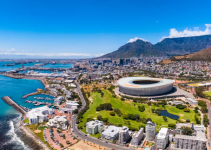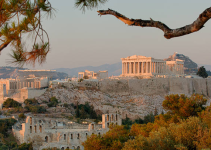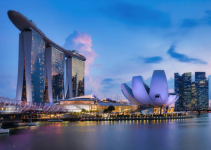Bangkok will grab you by the senses. The smell of street food hits you first, then the heat, then the absolute chaos of tuk-tuks weaving through traffic like they’re playing a video game. It’s beautiful and overwhelming at once.
But here’s what nobody tells you before you go. Some of that chaos is wonderful, and some of it? Well, some of it exists specifically to separate you from your money or waste your precious vacation time. I learned this the hard way during my first trip when I paid 800 baht for a five-minute taxi ride that should have cost 80.
You’ll have an amazing time in this city if you know what to watch out for. Let me save you from the mistakes I made.

Things to Avoid in Bangkok
Your time here matters too much to waste on tourist traps and scams. These ten things can derail your trip faster than you’d think, so let’s get you prepared.
1. Metered Taxis That “Forget” to Use the Meter
You’ll flag down a taxi, climb in, and within seconds, the driver tells you a flat rate. “200 baht to your hotel.” Sounds reasonable, right? Wrong. That same ride on the meter would cost you 65 baht.
This happens most often at tourist hotspots. Khao San Road, the Grand Palace area, and major shopping malls. Drivers see you, make an instant calculation about how much they can charge, and throw out a number. Some will straight up refuse to use the meter and ask you to get out if you insist.
Your move? Always ask “meter na krap/ka?” before getting in. If they refuse, walk away. There’s another taxi coming in 30 seconds. I promise. Bangkok has more taxis than you can imagine, and many drivers are perfectly honest. The meter starts at 35 baht, and you’ll watch it tick up slowly as you go. That’s what you want to see.
Late at night, this gets trickier. Drivers know you’re tired and less likely to argue. They’ll quote 300 baht for a ride that should cost 120. Stand firm anyway. The BTS Skytrain runs until midnight, and the MRT goes even later. You’ve got options.
2. Gem Store “Deals” That Aren’t Deals at All
A friendly local strikes up a conversation near a temple. He’s well-dressed, speaks perfect English, and seems genuinely interested in where you’re from. Then he mentions his cousin runs a gem store having a “special government sale” today only.
This is one of Bangkok’s oldest scams. The gems are either fake, massively overpriced, or both. These operations are slick. The “government sale” story adds fake legitimacy. The store looks professional. They might even show you certificates that mean absolutely nothing.
I watched this happen to a couple from Germany. They spent 40,000 baht on sapphires they were told they could resell for double back home. Spoiler: they couldn’t. Those “precious” stones were worth maybe 2,000 baht at best.
If someone approaches you randomly and the conversation steers toward shopping, jewelry, or special sales? That’s your exit cue. Real locals going about their day aren’t stopping tourists to recommend stores. They’re busy living their lives.
3. The Grand Palace When It’s “Closed”
You show up at the Grand Palace ready to explore, and a helpful person tells you it’s closed for a ceremony. But hey, they know a great temple nearby that’s open, and their friend has a tuk-tuk right here.
The Grand Palace is rarely closed. It opens at 8:30 AM and closes at 3:30 PM daily unless there’s a genuine royal ceremony, which doesn’t happen often. These “helpful” people are working with tuk-tuk drivers to take you on an expensive city tour you didn’t ask for.
Check the official closure dates before you go. Better yet, walk right up to the entrance and see for yourself. Ignore anyone who stops you before you reach the actual gates. They’re not palace staff. Palace staff are inside the palace, doing palace things.
The same scam runs at other tourist sites. Wat Pho, Wat Arun, and Jim Thompson House. If someone outside tells you it’s closed, verify it yourself. That extra two minutes of walking could save you hours of frustration and money.
4. Ping Pong Shows in Patpong
The signs are everywhere in Patpong Night Market. “Ping Pong Show Upstairs!” accompanied by someone trying to hand you a flyer. It sounds weird and intriguing, especially after a few drinks.
Here’s what actually happens. You go upstairs. You watch something more sad than entertaining. Then they hand you a bill for 3,000 baht for two drinks you thought were included in the “free” entry.
The drink scam is real and aggressive. They won’t let you leave without paying. Sometimes they’ll have intimidating guys blocking the exit. It becomes less “fun night out” and more “how do I get out of here safely?” very quickly.
Skip it entirely. Bangkok has incredible rooftop bars, fantastic live music venues, and authentic cultural performances that won’t leave you feeling scammed or uncomfortable. Patpong Night Market itself is fine for shopping (haggle hard), but those upstairs shows? Hard pass.
5. Dressing Inappropriately for Temples
You’re hot. Bangkok is hot. Those tiny shorts and a tank top make perfect sense. Until you try to enter Wat Phra Kaew and get turned away at the entrance.
Temples have strict dress codes. Your shoulders need to be covered. Your knees need to be covered. No see-through clothing. No ripped jeans with holes above the knee. Some temples provide wraps or pants to rent, but they’re usually hot, uncomfortable, and cost money you don’t need to spend.
Pack a light, long cotton skirt or loose pants. Bring a shawl or scarf. These take up almost no space in your bag and save you from either missing out on temples or buying overpriced cover-ups from vendors outside who spot unprepared tourists from a mile away.
I saw a group of visitors get denied entry to three different temples in one day because they weren’t dressed appropriately. They ended up buying uncomfortable polyester pants in the heat and were miserable the rest of the afternoon. Learn from their mistakes.
This applies to the Grand Palace especially. They’re stricter there than anywhere else. Men need pants (not shorts) and closed-toe shoes. Women need skirts below the knee or pants. Tank tops don’t work for anyone.
6. Eating at Restaurants With Photo Menus Near Tourist Sites
Those big, glossy photos of pad thai and green curry look amazing when you’re hungry. The restaurant is air-conditioned. It’s right next to your hotel. Easy choice, right?
Wrong. You’re about to pay triple for food that’s half as good. That pad thai in the photo menu costs 280 baht here. Three streets away, at a place locals actually eat, it costs 80 baht and tastes infinitely better because they’re not cooking for tourists who won’t come back anyway.
Your mission is to walk away from the main tourist areas. I mean, really walk. Five minutes. Ten minutes. Follow the office workers during lunch hours. They know where the good food is, and they’re not paying tourist prices.
Look for places where you can see into the kitchen. Where there’s a line of locals waiting. Where the menu might be in Thai with just a few English words. These are your spots. Point at what someone else is eating if you need to. Use Google Translate on the menu. It’s part of the adventure.
Street food stalls are even better. The vendor has been making the same dish for 20 years, and they’re really, really good at it. The turnover is fast, so everything is fresh. And you’ll pay 50 baht for something that would cost you 300 baht in an air-conditioned tourist restaurant.
7. Shopping at the First Price You’re Quoted
The vendor quotes you 600 baht for a silk scarf. You think that sounds fair. You pay. You walk away. Five stalls down, the exact same scarf sells for 200 baht.
Bangkok markets expect you to haggle. Chatuchak Weekend Market, night markets, floating markets, all of them. The first price is never the real price. It’s the “let’s see if this tourist doesn’t know better” price.
Start at half of what they quote. They’ll act shocked. You’ll go back and forth. Eventually, you’ll land somewhere in the middle. If they won’t budge and you really want the item, walk away. Actually, walk away. Nine times out of ten, they’ll call you back with a better price.
Fixed-price stores like 7-Eleven, shopping malls, and restaurants with printed prices? Those you can’t haggle. But everything else? Fair game.
I bought a beautiful hand-painted umbrella at Chatuchak. First price: 800 baht. Final price after haggling: 280 baht. Same umbrella, same vendor, five minutes of friendly negotiation. That’s how it works.
8. Taking Tuk-Tuks for Regular Transportation
Tuk-tuks look fun. They are fun for about five minutes. Then you realize you’re paying 250 baht for a ride that would cost 70 baht in a taxi, you’re breathing exhaust fumes, and the driver is taking the long way because he gets commission from a tailor shop he’s about to suggest you visit.
Use tuk-tuks for the experience once or twice. That’s it. Take a short ride, get some photos, enjoy the breeze. But for actually getting around Bangkok day to day? The BTS Skytrain and MRT are faster, cheaper, and air-conditioned.
A single BTS ride costs between 16 and 59 baht, depending on the distance. The trains come every few minutes during the day. You bypass all traffic. There’s no haggling, no scams, no wondering if you’re being taken the long way.
Tuk-tuk drivers specifically target tourists. They hang around hotels and tourist sites because they know locals won’t pay their prices. The going rate for tourists is usually three to five times what a local would pay for a taxi to the same place.
If you’re set on taking a tuk-tuk, agree on the price before getting in. Be specific about where you’re going and that you don’t want to stop anywhere else. Otherwise, you’re signing up for an unwanted city tour with shopping stops.
9. Booking Tours Through Your Hotel
Your hotel offers a floating market tour for 2,500 baht per person. Sounds convenient. They’ll pick you up right from the lobby. What could be easier?
You can book the same tour online for 800 baht. Hotels mark up everything because they’re taking a commission. They’re not doing the tour themselves. They’re calling the same tour companies you can book directly.
Use Klook, GetYourGuide, or Viator. Read reviews. Compare prices. Book what you want, when you want it, at actual market rates. The pickup location will probably still be your hotel anyway, so you’re losing nothing except the massive markup.
This applies to airport transfers, day trips, cooking classes, river cruises, all of it. Your hotel concierge might seem helpful, but they’re running a business. Their job is to earn money from you in any way they legally can.
I booked a cooking class through my hotel on my first visit. Cost me 3,200 baht. Next trip, I booked the same class online. Cost me 1,100 baht. Same school, same menu, same half-day class. The only difference was I didn’t let the hotel play middleman.
10. Staying Only in Tourist Areas
Khao San Road has a vibe, sure. Sukhumvit is convenient. But Bangkok has 50 districts, and most tourists see two of them.
You’re missing the real city. The neighborhood restaurants where pad krapow moo costs 45 baht instead of 280. The small temples with nobody else around. The markets are selling actual groceries to actual families instead of tourist souvenirs. The coffee shops where locals work on their laptops, and nobody is trying to sell you a suit.
Stay in Ari. Check out Thonglor. Spend an afternoon in Bang Rak. Take the ferry to Khlong San and walk around. These areas are still easy to reach (the BTS goes everywhere), but they feel different. More authentic. Less performance.
Your accommodation costs less here too. That 1,800 baht hotel room on Khao San Road? You can get something nicer for 1,200 baht in a local neighborhood, and you’ll have better food options within walking distance.
The tourist areas exist to serve tourists. They’re designed for quick turnover, maximum profit, and minimum connection to the actual city. Spending all your time there is like going to New York and never leaving Times Square. You’re technically there, but you’re not really experiencing the place.
Wrap-up
Bangkok rewards the curious and punishes the careless. Those first-time mistakes I made? They taught me how to travel better, but I’d rather you skip the learning curve and go straight to enjoying yourself.
These ten things don’t cover everything, but they cover the big stuff. The scams that waste your money, the habits that waste your time, the tourist traps that waste both. You’ll still make some mistakes because that’s part of travel. But at least they’ll be interesting mistakes, not expensive preventable ones.
Your Bangkok trip should be about the 4 AM pad thai at a street stall, the rooftop views at sunset, the temple that takes your breath away. Go have that trip.


